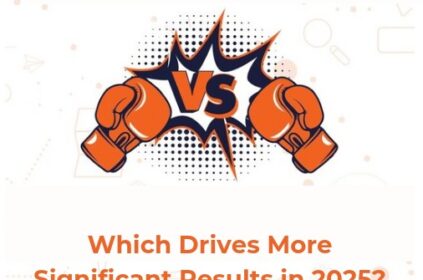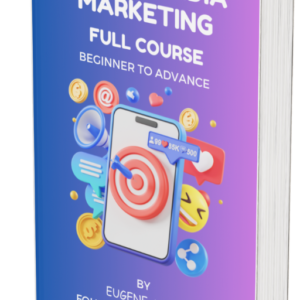You’ve meticulously crafted a stunning landing page, optimized your ad targeting to perfection, and driven a surge of qualified traffic to your website. Yet, a nagging question persists: Why are visitors leaving without converting?
The answer often lies in your copywriting. In today’s competitive digital landscape, effective copywriting is a necessity. This article builds upon our previous discussion on landing page copywriting by introducing powerful copywriting frameworks.
These frameworks provide structured approaches to crafting persuasive messages that resonate with your target audience and ultimately drive conversions.
By the end of this post, you’ll be equipped with practical frameworks and actionable tips to elevate your digital marketing copywriting. You’ll learn how to craft clear, concise, and results-oriented messaging that compels users to take the desired action. Let’s explore these frameworks that will take your conversion rates to new heights.
What is the Relationship between the Conversion Funnel and Copywriting?
The digital marketing funnel represents the journey potential customers take from initial brand awareness to conversion (e.g., purchase, signup). This journey can be broken down into distinct stages:

#1. Awareness: At this stage, potential customers become aware of your brand or product category for the first time.
#2. Interest: Once aware, users become interested in learning more about your specific offering.
#3. Desire: Here, the user recognizes the value proposition of your product/service and starts to consider it as a solution to their needs.
#4. Action: Finally, the user takes the desired action, such as making a purchase, subscribing to a service, or downloading a free trial.
Effective copywriting plays a crucial role at each stage of the conversion funnel. Here’s how:
#1. Awareness Stage: Compelling headlines, meta descriptions, and social media posts grab attention and introduce your brand to new audiences.
#2. Interest Stage: Engaging website copy, product descriptions, and blog content delve deeper into the features and benefits of your offering, piquing user interest.
#3. Desire Stage: Powerful calls to action (CTAs), persuasive landing pages, and well-crafted email sequences highlight the unique value proposition and convince users your product/service is the answer.
#4. Action Stage: Clear and concise CTAs with a strong sense of urgency guide users towards the desired action, ultimately driving conversions.
By understanding the user’s mindset at each stage and tailoring your copywriting accordingly, you can significantly increase your chances of converting website visitors into loyal customers.
In the following section, we will examine powerful copywriting frameworks that can be applied throughout the conversion funnel to craft persuasive and results-oriented messages.
6 Powerful Copywriting Frameworks: Building Blocks for High Conversions
Now that we’ve established the importance of copywriting throughout the conversion funnel, let’s delve into specific frameworks that can elevate your digital marketing messages.
These frameworks provide structured approaches to crafting compelling copy that resonates with your target audience and ultimately drives conversions.
#1. Problem-Agitate-Solution (PAS)

This copywriting framework focuses on identifying your target audience’s pain points and challenges. It then amplifies these issues, creating a sense of urgency for a solution. Finally, you position your product or service as the answer, effectively alleviating their pain points and delivering the desired outcome.
Example:
- Problem: “Struggling to keep track of your ever-growing social media schedule?”
- Agitate: “Missed deadlines, inconsistent posting, and overwhelmed feeling are all too common for busy social media managers.”
- Solution: “Introducing our all-in-one social media management platform! Streamline your workflow, schedule posts in advance, and gain valuable insights – all from a single dashboard.”
#2. Before-After-Bridge (BAB)

This copywriting framework paints a vivid picture of the user’s situation before discovering your product or service. It then contrasts that situation with the improved “after” scenario – a world where their problems are solved and their lives are better. The “bridge” explains how your offering acts as the catalyst for this positive transformation.
Example:
- Before: “Feeling overwhelmed with a cluttered inbox and missed deadlines? Your workday feels like a constant battle against the ever-growing email mountain.”
- After: “Imagine a world where your emails are effortlessly organized, tasks are prioritized, and you regain control of your inbox. Focus on what matters most with our intuitive email management system.”
- Bridge: “Our advanced filtering and automation features help you categorize emails, prioritize tasks, and free up valuable time to focus on strategic initiatives.”
#3. Features-Advantages-Benefits (FAB)
This particular copywriting framework explores how your product or service benefits users by focusing on its key features. It starts by outlining the key features, then translates them into tangible advantages that users can understand.
Finally, it connects those advantages to the ultimate benefits – how these features improve the user’s life and solve their problems.
Example:
- Feature: “Our CRM software boasts a user-friendly interface with robust contact management capabilities.”
- Advantage: “Effortlessly organize and track customer interactions, centralize all communication channels, and gain a holistic view of your customer relationships.”
- Benefit: “Boost sales productivity, close deals faster, and build stronger customer relationships with our comprehensive CRM solution.”
#4. Attention-Interest-Desire-Action (AIDA)

This classic copywriting framework focuses on guiding users through a clear decision-making journey.
- Attention: Grab user attention with a captivating headline, image, or question that sparks curiosity.
- Interest: Hook them further by elaborating on the problem you address and its potential consequences.
- Desire: Highlight the unique benefits and value proposition of your offering, painting a picture of the improved state users can achieve.
- Action: Include a clear and compelling call to action (CTA) that prompts users to take the next step.
Example:
- Attention: “Tired of generic, low-performing ads?”
- Interest: “Discover how targeted advertising can reach the right audience, boost engagement, and skyrocket your ROI.”
- Desire: “Imagine crafting personalized ad campaigns that resonate deeply with your ideal customers, driving conversions and exceeding your marketing goals.”
- Action: “Get started with our free ad targeting guide today!”
#5. Question-Connect-Close (QCC)
This copywriting framework leverages the power of curiosity to engage users and pique their interest.
- Question: Pose a thought-provoking question that directly relates to your target audience’s pain points or aspirations.
- Connect: Connect the question to your product or service by demonstrating how it addresses the user’s needs or desires.
- Close: Present a compelling offer or CTA that encourages users to learn more or take action.
Example:
- Question: “Ever wonder how industry leaders achieve exceptional customer satisfaction?”
- Connect: “Our customer relationship management (CRM) software empowers you to personalize interactions, build stronger relationships, and cultivate loyal brand advocates.”
- Close: “Schedule a free demo today and discover how our CRM can transform your customer experience!”
#6. Scarcity-Urgency-Action (SUA)
This framework leverages the psychology of scarcity and urgency to drive immediate action. It is best used strategically and ethically.
- Scarcity: Highlight the limited availability of a product, service, or offer to create a sense of urgency.
- Urgency: Emphasize the limited time window for users to take advantage of an offer, prompting them to act before they miss out.
- Action: Include a strong CTA that encourages users to seize the limited-time opportunity.
Example: (Use ethically!)
- Scarcity: “Only 5 spots remaining in our exclusive marketing masterclass!”
- Urgency: “This offer expires in 24 hours – don’t miss your chance to learn from industry experts!”
- Action: “Secure your spot in the masterclass today!”
By mastering these copywriting frameworks, you’ll be well-equipped to craft compelling copywriting that resonates with your target audience at each stage of the conversion funnel.
Let us discuss how to choose the right copywriting framework for your specific campaigns and provide actionable tips for putting these frameworks into practice.
Choosing the Right Framework and Putting it into Action

Selecting the most effective copywriting framework depends on several factors:
#1. Campaign Goal: Are you aiming to generate brand awareness, drive traffic to a landing page, or secure immediate sales? Align your chosen framework with your specific objective.
#2. Target Audience: Understanding your audience’s needs, interests, and decision-making process is crucial. Choose a framework that resonates with their mindset and buying journey.
#3. Content Type: The copywriting framework might differ depending on whether you’re crafting website copy, email marketing campaigns, or social media ads.
Here are some practical tips to help you implement these frameworks effectively:
#1. Focus on Benefits, not Features: People care more about how your product/service improves their lives than its technical specifications. Translate features into tangible benefits throughout your copy.
#2. Keep it Clear and Concise: Avoid jargon and overly complex sentences. Aim for clear, concise language that your target audience can easily understand.
#3. Embrace Storytelling: Weave captivating stories into your copy to connect with users on an emotional level and make your message more memorable.
#4. Incorporate Powerful Calls to Action (CTAs): Don’t leave your audience guessing what to do next. Tell them exactly what action you want them to take – visit a website, subscribe to a newsletter, or make a purchase.
By strategically selecting the right landing page copywriting framework and adhering to these best practices, you can transform your digital marketing copywriting from bland descriptions to persuasive messages that resonate with your audience and drive real results.
Deepen Your Copywriting Expertise: Resources for Digital Marketers
Equipping yourself with the right tools and resources is vital for ongoing success in digital marketing copywriting. Here are a few resources to help you refine your skills and stay ahead of the curve:
#1. Copyblogger: This website offers a wealth of free articles, tutorials, and courses on crafting effective copywriting for various marketing channels. ()
#2. The AWAI Website: The American Writers & Artists Institute (AWAI) provides comprehensive online courses and certifications specifically designed to train copywriters for success in the digital marketing landscape. (https://www.awai.com/)
#3. Swipe File Inspiration: Curate a swipe file of successful marketing campaigns and copywriting examples from industry leaders. Analyze what makes them effective and adapt their techniques to your own messaging.
#4. Copywriting Books: Invest in well-regarded copywriting books by renowned authors like Ogilvy on Advertising by David Ogilvy, Break Through the Noise by Seth Godin, or Made to Stick by Chip Heath and Dan Heath. These offer timeless principles and practical strategies for crafting persuasive copy.
#5. Copywriting Communities: Engage with online communities of copywriters and digital marketers. Participate in discussions, share your work for feedback, and learn from the experiences of others. Some popular options include communities on platforms like Facebook and LinkedIn.
Remember, effective copywriting is a continuous learning process. By consistently honing your skills, experimenting with different frameworks, and staying up-to-date with the latest trends, you can transform your digital marketing copy into a powerful tool for driving conversions and achieving your marketing goals.
Conclusion
In today’s digital marketing battlefield, where attention spans are fleeting and competition is fierce, the power of well-crafted copywriting cannot be overstated. By mastering these copywriting frameworks, you’ve equipped yourself with a strategic arsenal to craft compelling messages that resonate with your target audience and ultimately drive conversions.
Remember, the key lies in understanding the user journey at each stage of the conversion funnel and tailoring your copy accordingly. Identify their pain points, highlight the transformative power of your offering, and guide them towards the desired action with clear and persuasive calls to action.
As you continue to refine your copywriting skills and experiment with different frameworks, you’ll witness a significant increase in website traffic, lead generation, and ultimately, sales. So, unleash the power of words, craft compelling copy, and watch your digital marketing campaigns reach new heights of success!










